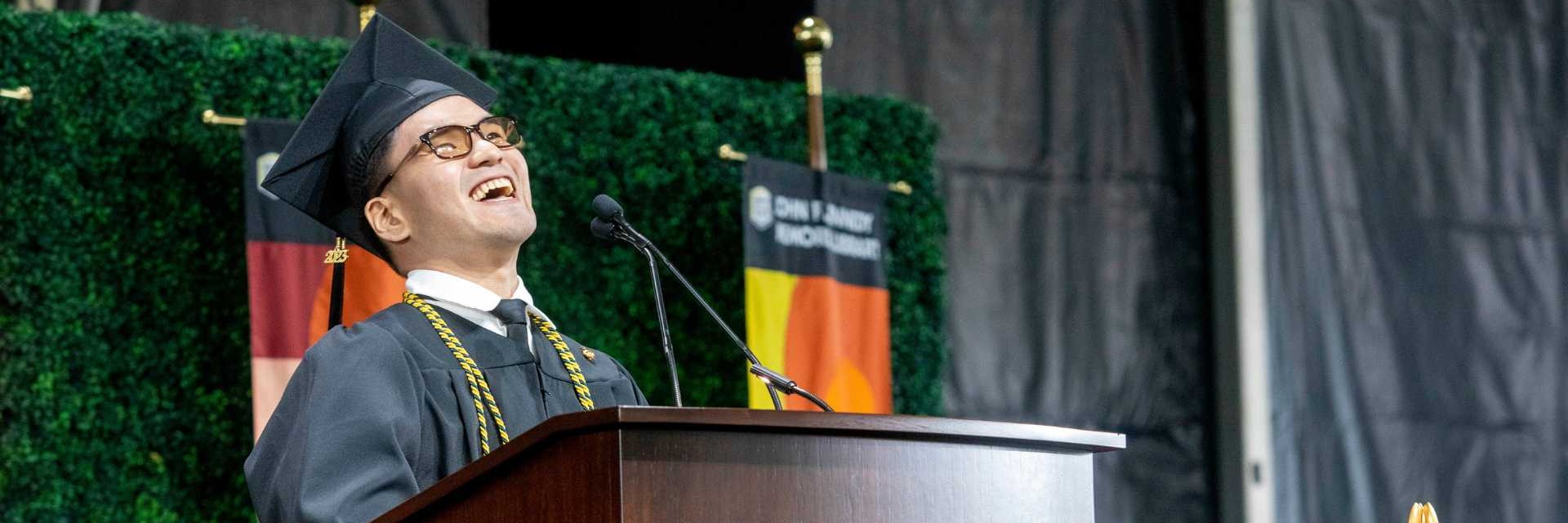Born in Richmond Heights, Missouri, Kim Abeles later moved to Los Angeles and began painting in the 1970’s. Kim Abele's work became world renowned in the 1980s for its explorative nature spanning across genres of biography, geography, feminism, and the environment that emphasizes two spheres. One being the world of humans and domestic spheres, which embodies visuals of social issues and everyday experiences. The other highlights the experiences of nature impacted by society and environmentalism. Kim Abeles focuses on environmentalism and social political issues in part from growing up in a “steel town” in Pittsburgh. Having moved to Los Angeles in the late 1970s, sweatshops started to pop up around her art studio, inspiring her to make art about “real life”. A culminating exhibition of her work entitled Kim Abeles: Social Furniture (1976–2023) is now open in the Ronald H. Silverman Fine Arts Gallery at Cal State LA until October 28, 2023.
Currently on view at the exhibit is Pearls of Wisdom, made in 2011. A work that uses mixed media such as mylar paper, yarn and threads, plaster gauze, photography and the subject's words to emphasize the issues of domestic violence. Within this work, Abeles takes photos of the hands of women and survivors, moving beyond domestic violence they hand make interpretations of oyster pearls. Photographs taken of hands covered in plaster, holding yarn with messages to viewers of their experience as domestic violence survivors. One message read, “I could run or I could look to myself, to my stronger core. My story is worthwhile if it helps others avoid the traps and the violence”. These images and quotes are combined with a wall-sized, shelf display of handmade pearls linked together by red thread, made by the family and supporters of those who are survivors of domestic violence. It’s important to note that the images of pearls are used within Abele’s work to emphasize the ways that “ … pearls formed inside oysters in response to harmful irritants,” similarly, these participants who are domestic violence survivors “... transformed memories of domestic pain into objects and shared texts”.
For Abeles highlighting the experiences of survivors of various social issues is done via diverse forms of imagery and mixed media. Within the piece Collective Diary, (Dedicated to People with AIDS), made between 1989–1993, is an installation of 200 photographs of objects and scrapbook photos belonging to people with AIDS. The intimate black and white images range from photos of gay male erotica, to bibles, to family photos. Some of the images are photos of the mail that people with AIDS received in the late 80’s and early 90s. For instance, within Collective Diary, (Dedicated to People with AIDS), Abele’s created a desk to sit in front of the 200 black and white photographs that has a clear desk top. Upon looking closer, as all of Abele’s work requires, one can see images of informational brochures on how one does not contract AIDS amid the late 80s taboo and hysteria. Another image within the clear desk top is a response letter to an SSI applicant with AIDS who is denied services. Many of Abele’s images within Collective Diary, (Dedicated to People with AIDS), are extremely intimate images, commenting on the humanity and the denied humanity of people with AIDS in the late 80s and early 90s.
Sturdy and metallic, Kim Abeles, work “Self Portrait”, made in 2016, may seem to a passerby an homage to the self. With numerous cut outs of identification cards to various institutions fused to a metal chair; images of Kim Abeles with several haircuts and dates attached to these identification cards emphasize her many evolutions. It begs the question, is the metal chair full of Kim Abele's images with a mirror underneath it, simply an ode to the self? Or a commentary on the various institutions we must be tied to, in order to function in society?
Another piece by Abeles shown at The Ronald H. Silverman Fine Arts Gallery at Cal State LA is called, Jay Walking ticket, 1995. This image is a stencil from an original ink drawing, on a ceramic plate. This image not only elicits thought and at times concern but is an amazing commentary on the state and its impact on its inhabitants. The Jay Walking ticket highlights the ways that people have their movements controlled by the state and are made to pay financial consequences for disobeying. To add, the image of a paper ticket being written out highlights the ways that people create trash and overuse paper. This image is a commentary on social issues but also a statement on Kim Abele’s environmentalism work.
Kim Abele’s emphasis on environmentalism is further showcased within her work, Paper Person, 2009. To create this large-scale artwork Abeles collected paper trash from a facility over the course of a single day, ironing and laminating it to create the 48’ x 45’ Paper Person. Abele seems to use this piece to comment on the responsibility and relationship humans and our institutions have on the amount of waste created and accumulated in a single day. The seemingly melancholic and delated body language the Paper Person embodies, quite literally, the humanistic and expressive inspiration behind Abele’s thought on the topic.
Kim Abeles uses waste and particulate matter such as smog to comment on the ways that the environment and humanity are inevitably linked. Abeles, having lived in Los Angeles for a long time, wanted to highlight the air pollution in the city. Through a collection entitled Smog Collectors 1987-2020, Abeles places ceramic plates on top of her Los Angeles city studio to capture air particles and pollutants in the air. Always with a steep message on both civic engagement and environmentalism, Abeles illustrates within the smog soot, images of world leaders that have pledged in the past to do something about smog, air pollution, and air quality. The duration in which the ceramic plates were left out on her Los Angeles studio roof was intentionally dependent on each world leader's negative impact on air pollution and smog, darkening by those statistics. Included are illustrations of Vladimir Putin, Ronald Reagan and Dilma Rousseff.
Encompassing messages on environmentalism, social issues, and civic engagement, Kim Abele's work has spanned over decades. Her work has been showcased in the New York Times, The Getty Museum and now, The Ronald H. Silverman Fine Arts Gallery at Cal State LA. The official opening reception of Kim Abeles: Social Furniture (1976-2023) will be held on Saturday, September 23, 2023 1–6 pm.. View Kim Abeles’ artwork from September 14th to October 28th, 2023, closing with an exhibition walkthrough with the artist herself on October 28th, from 6–8 pm.

